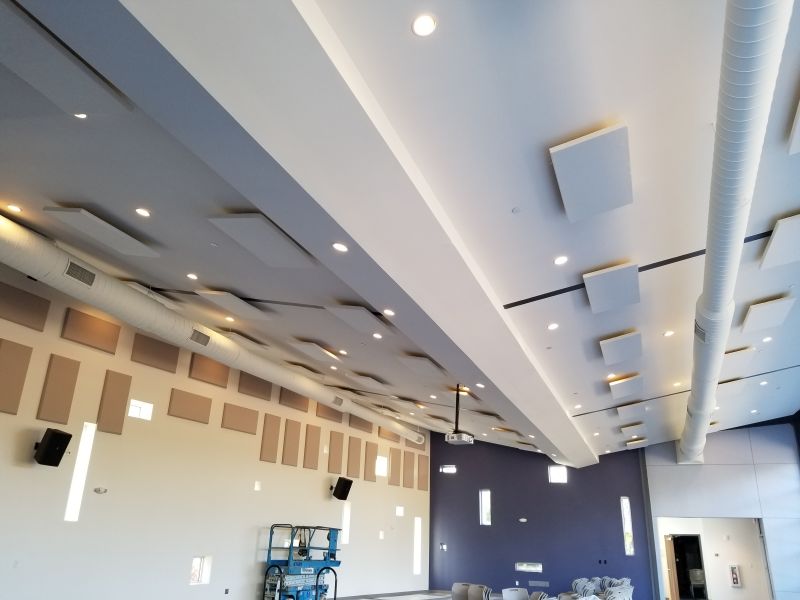Multi-purpose rooms, by definition, will have several use cases in which acoustic criteria are likely to vary. In some cases you may be looking to host a comfortable dining environment, while in others, you may have a networking event where people are encouraged to walk around and mingle. There may situations in which amplified sound is used, and others where it is unnecessary.
Events where keynote speakers are expected to be heard across a multi-purpose space is the ultimate test in whether the acoustic environment is sufficient. We define this as the RT60, or Reverberation Time of the space. It is titled RT60 because it is a measure of how long, in seconds, it takes for a noise to diminish by 60 decibels. If the sound decays quickly then there is enough absorption in the space to turn the sound energy into heat. If, on the other hand, the noise reverberates for some time, then there are too many hard, reflective surfaces in the room.
While restaurant acoustics are generally suggested to be in the 0.7-1.1 second range, depending on intimacy and liveliness of the space, multi-purpose rooms may have longer acoustic requirements. While multi-purpose room acoustics may range to 1.5 seconds, there should be analysis to ensure that reverberation at the lower frequency range does not exceed 2 seconds at any 1/3rd octave band.
The larger the room, the more required acoustic treatment. See this detail on Small Room vs Large Room Acoustics
Wellcome OM Multi Purpose Room Acoustic Treatment
The WellCome OM Wellness Center had a large, multi-purpose room as part of their wellness and recovery campus. It was used for large seminars, speaking engagements, and occasional book signings and special events.
Upon our initial site visit, the broadband reverberation time in the space was over 3 seconds! At this length, regular speech becomes very difficult to understand, and amplified speech loses intelligibility.
After a brief consultation and offsite analysis, we determined that just under 100 custom-made acoustic panels were needed to reduce the reverb time to an acceptable level. These acoustic wall panels and acoustic clouds were suspended from the walls and ceilings high enough so that the design below was not disrupted. At heights of almost 20 feet, a scissor lift was needed to install the absorption products between the lights and vents along the ceiling.
At the end of the day, the acoustic treatment was completed in 2 days, and allowed the upcoming speaking engagement to be held without any issues. By performing an analysis on the multi-purpose room then completing the fabrication and installation of the acoustic treatment, Commercial Acoustics was able to provide our client with an ideal acoustic performance, on time and under budget.


